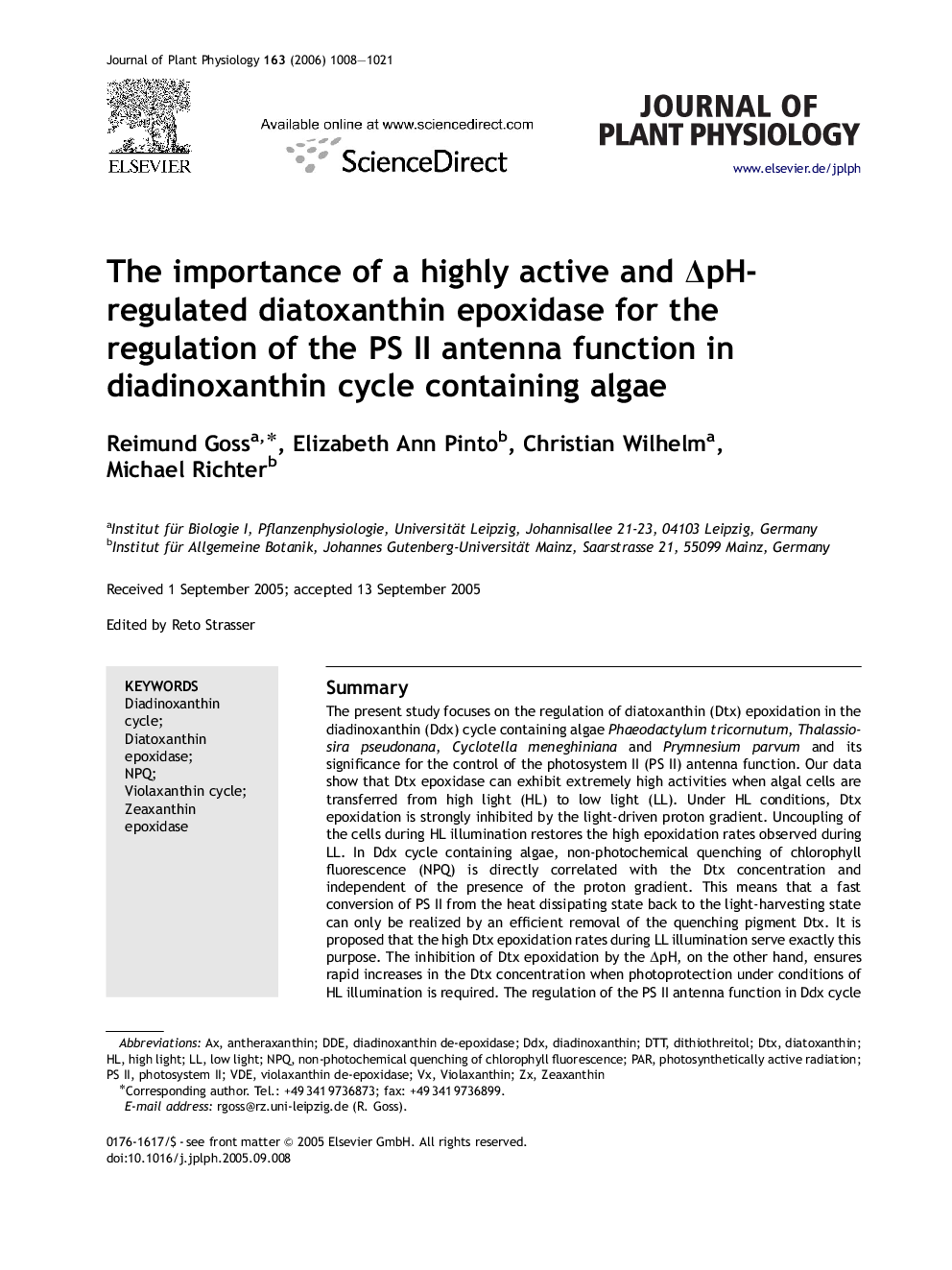| کد مقاله | کد نشریه | سال انتشار | مقاله انگلیسی | نسخه تمام متن |
|---|---|---|---|---|
| 2057728 | 1075921 | 2006 | 14 صفحه PDF | دانلود رایگان |

SummaryThe present study focuses on the regulation of diatoxanthin (Dtx) epoxidation in the diadinoxanthin (Ddx) cycle containing algae Phaeodactylum tricornutum, Thalassiosira pseudonana, Cyclotella meneghiniana and Prymnesium parvum and its significance for the control of the photosystem II (PS II) antenna function. Our data show that Dtx epoxidase can exhibit extremely high activities when algal cells are transferred from high light (HL) to low light (LL). Under HL conditions, Dtx epoxidation is strongly inhibited by the light-driven proton gradient. Uncoupling of the cells during HL illumination restores the high epoxidation rates observed during LL. In Ddx cycle containing algae, non-photochemical quenching of chlorophyll fluorescence (NPQ) is directly correlated with the Dtx concentration and independent of the presence of the proton gradient. This means that a fast conversion of PS II from the heat dissipating state back to the light-harvesting state can only be realized by an efficient removal of the quenching pigment Dtx. It is proposed that the high Dtx epoxidation rates during LL illumination serve exactly this purpose. The inhibition of Dtx epoxidation by the ΔpH, on the other hand, ensures rapid increases in the Dtx concentration when photoprotection under conditions of HL illumination is required. The regulation of the PS II antenna function in Ddx cycle containing algae is different to that in violaxanthin (Vx) cycle containing plants, where for the zeaxanthin (Zx)-dependent NPQ the presence of a proton gradient is mandatory. In the green alga Chlorella vulgaris conversion of PS II from the heat dissipating state back to the light-harvesting state is controlled by the ΔpH, whose relaxation after a transition from HL to darkness or LL rapidly abolishes the thermal dissipation of excitation energy, including the Zx-dependent NPQ. Due to the inability of Zx to quench fluorescence in the absence of the ΔpH a fast epoxidation of Zx to Vx in LL is not needed and is missing in Chlorella vulgaris.
Journal: Journal of Plant Physiology - Volume 163, Issue 10, 5 October 2006, Pages 1008–1021